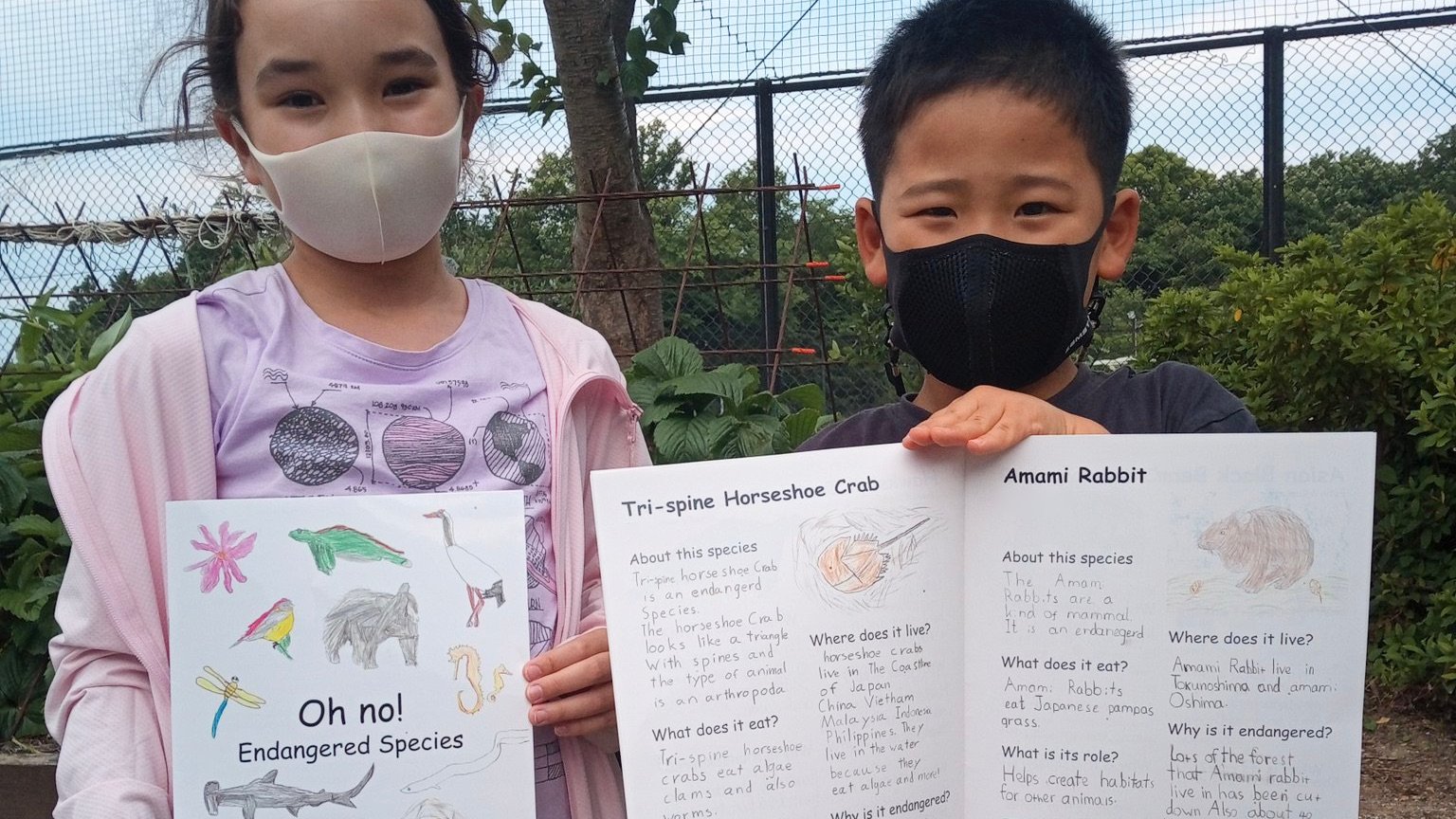
As a part of their UOI “Sharing the Planet,” Gr. 1 students were inquiring into living things and what they need to survive. What do plants and animals need to thrive and grow? How do they change their environment to suit their needs?
As they researched the needs of different living things in diverse environments, they also learned how to handle data and compare and contrast animals using graphs and Venn Diagrams. This exercise helped them make connections to their math unit. Watch the video as a student explains how his skills and knowledge have connected.
Out of Inquiry, a Great Idea is Born
And as it often happens when students formulate inquiries and guide their learning, a great idea developed. During the unit, a student who was particularly interested in horseshoe crabs got concerned after learning that not only horseshoe crabs but lots of other animals are listed as endangered species. To help protect horseshoe crabs and raise awareness about endangered species, he came up with an idea to create books about endangered species, sell them, and donate the profits to a conservation group working on saving and breeding horseshoe crabs.
Everybody in Gr. 1 agreed, and they started creating the book. They were busy researching, planning, and making a draft of their book on endangered species in Japan. Following that, each of them became editors, carefully checking each other’s work for content and technical mistakes, all the while learning to be kind and constructive in their critiques.
From Science to Math to...Marketing?!
When the book was completed, and while they were waiting for their printed masterpiece to be delivered, Gr. 1 students got busy strategizing how to market their book. They wanted to sell as many as possible so they could raise a lot of money and donate it to the conservation group. They brainstormed and decided to make posters and present them at the primary assembly to promote the book. They also filmed a short video to use during their presentation.
When the finished books arrived from the printer, they were so proud of their work! The book was so popular that they quickly sold all 70 copies!
The PYP and Interdisciplinary Learning
The unit was a perfect example of how the PYP curriculum works at NIS. It started as a science unit where students learned about animals, their habitats, and what they needed to survive. But then it was connected to math, where they learned data handling using graphs and Venn Diagrams. While creating the book, students used their research skills and practiced non-fiction writing. As one area of learning informs the other, the understanding deepens.
Undeniably, the most remarkable thing about this unit is that it was taken down a path and modified into an even larger exploration thanks to the students’ interests and passions. The result was a tangible product - their very own book and the satisfaction of knowing their learning was making a difference in the lives of endangered animals! The classroom is not the only place where learning happens. Knowledge and understanding deepen when students connect what they learn in the classroom with the world around them. And what could be better than when their new knowledge and understanding of the world creates a positive impact?

